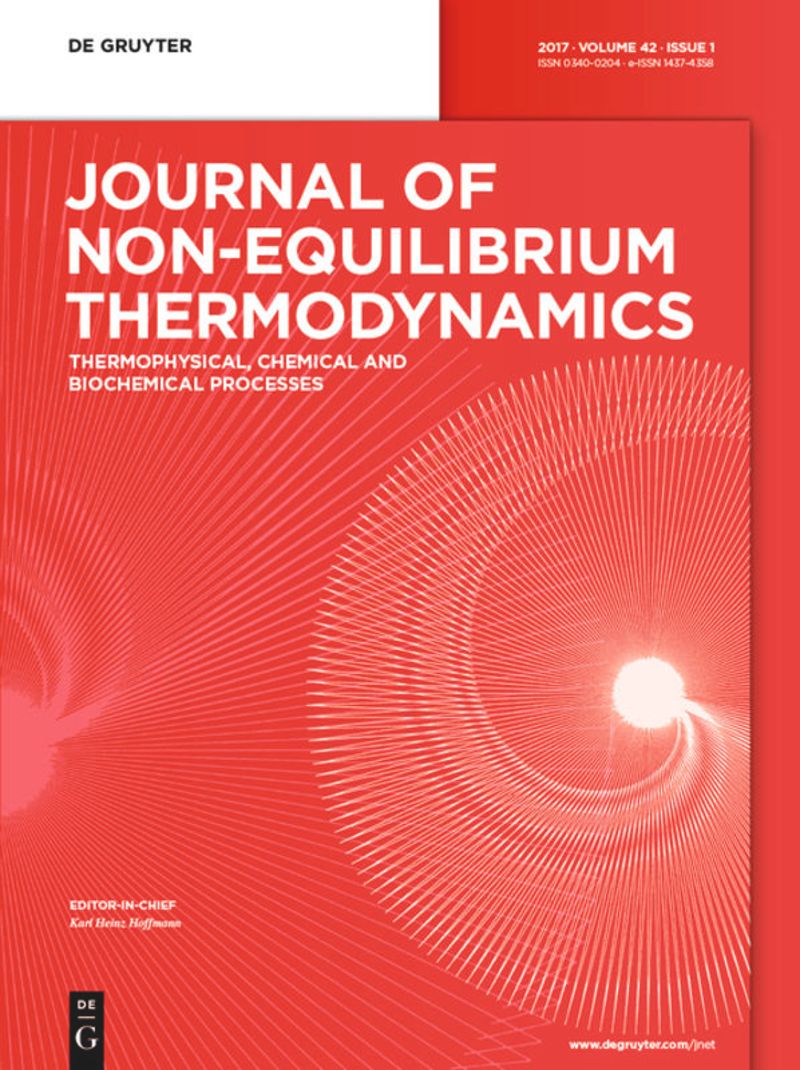三储层内可逆化学泵的最大生态功能性能
IF 4.2
3区 工程技术
Q1 MECHANICS
引用次数: 12
摘要
摘要内可逆化学泵(ECP)是电化学、光化学、固态装置和质量交换器的理论模型。ECP可分为两个、三个和四个质量储存器装置。ECP的常用性能指标是能量泵送速率(EPR)和性能系数(COP)。将基于能量的生态功能目标(EFO)引入到三个水库ECP的性能优化中。推导了具有线性和扩散传质定律的EFO和COP之间的优化关系。给出了数值算例,分析了循环参数和MTL对最优EFO性能的影响。对于线性MTL,比较最大EFO点和无量纲EPR为0.016的点的性能,COP增加14.4%,熵产生率(EGR)下降52%,EPR损失仅为30%。对于扩散MTL,比较在最大无量纲EFO点和无量纲EPR为0.01的点的性能,COP增加11.3%,EGR下降46.9%,EPR损失仅为30%。结果表明,EFO是EPR和EPR耗散之间的折衷,有利于能量的有效利用。在三个储层化学势相同的情况下,线性MTL的最大无量纲EFO和相应的COP大于扩散MTL。本文章由计算机程序翻译,如有差异,请以英文原文为准。
Maximum ecological function performance for a three-reservoir endoreversible chemical pump
Abstract Endoreversible chemical pump (ECP) is a theoretical model of electrochemical, photochemical, solid-state apparatus and mass exchangers. ECP can be classified as two-, three- and four-mass-reservoir devices. The usual performance indicators for ECPs are energy pumping rate (EPR) and coefficient of performance (COP). Energy-based ecological function objective (EFO) is introduced to performance optimization of three-reservoir ECP. Optimization relationships between EFO and COP with linear and diffusive mass transfer laws (MTLs) are deduced. Numerical examples are provided, and influences of cycle parameters and MTLs on optimal EFO performances are analyzed. For linear MTL, compared performances at maximum EFO point and point where dimensionless EPR is 0.016, COP increases 14.4% and entropy generation rate (EGR) drops 52% with only 30% loss of EPR. For diffusive MTL, compared performances at maximum dimensionless EFO point and point where dimensionless EPR is 0.01, COP increases 11.3% and EGR drops 46.9% with only 30% loss of EPR. It demonstrates that EFO is a trade-off between EPR and dissipation of EPR, which is beneficial to utilize energy effectively. With the same chemical potentials of three reservoirs, the maximum dimensionless EFO and the corresponding COP with linear MTL are bigger than those with diffusive MTL.
求助全文
通过发布文献求助,成功后即可免费获取论文全文。
去求助
来源期刊
CiteScore
9.10
自引率
18.20%
发文量
31
审稿时长
1 months
期刊介绍:
The Journal of Non-Equilibrium Thermodynamics serves as an international publication organ for new ideas, insights and results on non-equilibrium phenomena in science, engineering and related natural systems. The central aim of the journal is to provide a bridge between science and engineering and to promote scientific exchange on a) newly observed non-equilibrium phenomena, b) analytic or numeric modeling for their interpretation, c) vanguard methods to describe non-equilibrium phenomena.
Contributions should – among others – present novel approaches to analyzing, modeling and optimizing processes of engineering relevance such as transport processes of mass, momentum and energy, separation of fluid phases, reproduction of living cells, or energy conversion. The journal is particularly interested in contributions which add to the basic understanding of non-equilibrium phenomena in science and engineering, with systems of interest ranging from the macro- to the nano-level.
The Journal of Non-Equilibrium Thermodynamics has recently expanded its scope to place new emphasis on theoretical and experimental investigations of non-equilibrium phenomena in thermophysical, chemical, biochemical and abstract model systems of engineering relevance. We are therefore pleased to invite submissions which present newly observed non-equilibrium phenomena, analytic or fuzzy models for their interpretation, or new methods for their description.

 求助内容:
求助内容: 应助结果提醒方式:
应助结果提醒方式:


